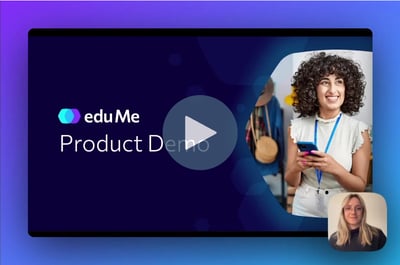The shift towards mobile technology has fundamentally changed the way that we consume and communicate information in all aspects of our lives - 83% of the global population now own a smartphone, and we’re estimated to spend an average of 3+ hours on our mobile devices every day.
The arrival of mobile technology has also hugely impacted the workplace. The rise of mobile learning means that employers can now provide highly engaging and accessible information directly through employees’ smartphones that can be accessed anywhere, and at any time.
The benefits are numerous, yet many companies are still lagging behind in adapting to this new learning approach. Even in deskless industries with widely dispersed workforces, employers are still relying on traditional in-person training.
Here are some reasons to start implementing a mobile training strategy within your organization, from cost savings to increased engagement and knowledge retention.
The benefits of mobile learning
1. Time efficient
One of the primary factors preventing employees from learning on the job is the lack of time to do so. Mobile learning directly addresses this challenge by empowering workers to access knowledge at any time.
Mobile-friendly methods allow learners to access information in a quickly and easily, able to pick up learning as and when suits them. As a result, smartphone learners complete course material 45% faster than those using a desktop computer.
Mobile learning is also time-efficient from an administrative standpoint. The best platforms will enable you to author learning content quickly and deliver it with ease, giving you more time to spend on other projects.
2. Increased knowledge retention
Delivering training via mobile can improve knowledge retention by 55% compared to traditional training methods.
This is because mobile learning often includes content such as video and gamification which is broken down into smaller, bitesize chunks. Short-form content is proven to increase information retention by 20%, resulting in a more informed workforce and better ROI on your L&D investment.
3. Cost-effective
Mobile learning is immediately more cost-effective than traditional classroom-based training - simply by removing the brick and mortar expenses, physical tools and supplies, travel expenses to and from the venue, and the wages paid to an in-person trainer.
Learners are also able to use their personal devices to complete training, eliminating the need for employers to provide tech.
4. More engaging
By replicating the content that we already consume daily via our social media feeds, mobile learning is better placed to engage workers and make training feel like an opportunity to upskill, rather than a box to tick. Users actually report a 72% increase in engagement with mobile learning content.
Promoting healthy competition by adding gamification features (e.g. in-app badges and leaderboards) also helps to make training more “addictive” by triggering a dopamine release, making learners more likely to return and engage with your content independently.
5. More accessible
Training content that’s delivered via mobile is training that can be accessed 24/7 at any chosen location. This means that workers are able to fit in training around their current schedules and complete lessons at their own pace, in the way that best suits them.
Opting for a seamless learning platform takes this even further by embedding training content into your existing tech stack. Learners are thus able to access content within the apps they already use daily for work with just the click of a button.
6. Higher completion rates
Learning content that’s more accessible and engaging ultimately leads to higher completion rates. This is even more true for seamless learning content (surfaced in-app without the need to log in) which has led eduMe clients to achieve training completion rates of over 70%, 2.5 times higher than the benchmark rate for optional lessons.
Achieving high completion rates on your training isn’t just important for maximizing ROI, it also ensures that your learners are gaining value from your investment and are empowered with the information they need to perform at their best.
7. Encourages continuous learning
Mobile learning platforms are a great way to foster a continuous learning culture, which is crucial for employee retention and engagement.
With mobile, you’re able to suggest new ways for learners to upskill and boost performance by leveraging communications. Triggered and contextual notifications can be sent based on user behavior, sending learners directly to the relevant training course.
Are you looking to make the switch to mobile learning? eduMe is the leading mobile training platform for deskless workers, already helping companies like Uber, Grubhub, Marriott and Gopuff to better empower their dispersed workforces. Our seamless technology enables you to embed relevant and timely information within your existing tech stack, allowing users to learn within the flow of work.
Get in touch now to see how we can help you reap the benefits of mobile learning 👇






